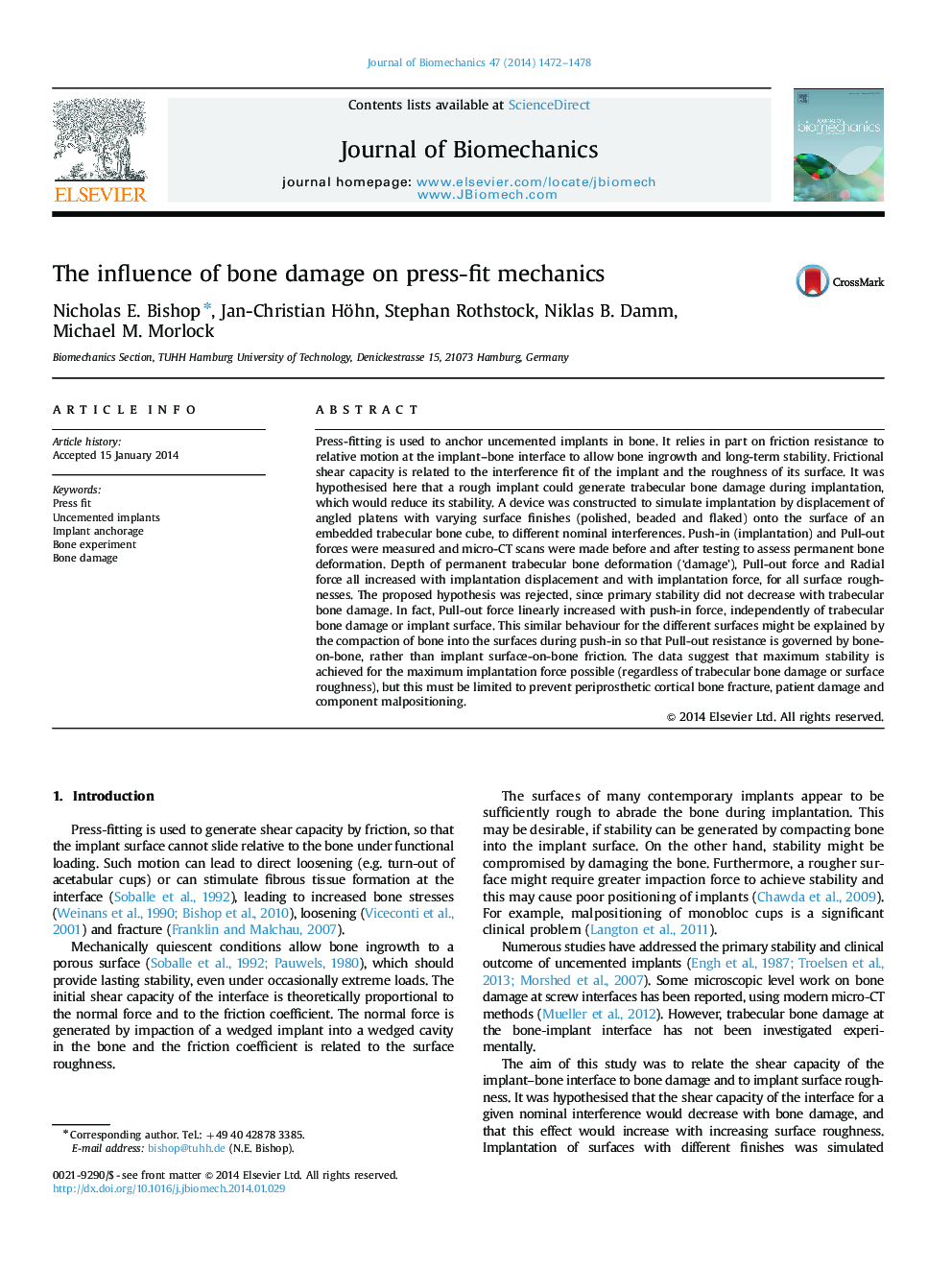| Article ID | Journal | Published Year | Pages | File Type |
|---|---|---|---|---|
| 10432032 | Journal of Biomechanics | 2014 | 7 Pages |
Abstract
Press-fitting is used to anchor uncemented implants in bone. It relies in part on friction resistance to relative motion at the implant-bone interface to allow bone ingrowth and long-term stability. Frictional shear capacity is related to the interference fit of the implant and the roughness of its surface. It was hypothesised here that a rough implant could generate trabecular bone damage during implantation, which would reduce its stability. A device was constructed to simulate implantation by displacement of angled platens with varying surface finishes (polished, beaded and flaked) onto the surface of an embedded trabecular bone cube, to different nominal interferences. Push-in (implantation) and Pull-out forces were measured and micro-CT scans were made before and after testing to assess permanent bone deformation. Depth of permanent trabecular bone deformation ('damage'), Pull-out force and Radial force all increased with implantation displacement and with implantation force, for all surface roughnesses. The proposed hypothesis was rejected, since primary stability did not decrease with trabecular bone damage. In fact, Pull-out force linearly increased with push-in force, independently of trabecular bone damage or implant surface. This similar behaviour for the different surfaces might be explained by the compaction of bone into the surfaces during push-in so that Pull-out resistance is governed by bone-on-bone, rather than implant surface-on-bone friction. The data suggest that maximum stability is achieved for the maximum implantation force possible (regardless of trabecular bone damage or surface roughness), but this must be limited to prevent periprosthetic cortical bone fracture, patient damage and component malpositioning.
Keywords
Related Topics
Physical Sciences and Engineering
Engineering
Biomedical Engineering
Authors
Nicholas E. Bishop, Jan-Christian Höhn, Stephan Rothstock, Niklas B. Damm, Michael M. Morlock,
